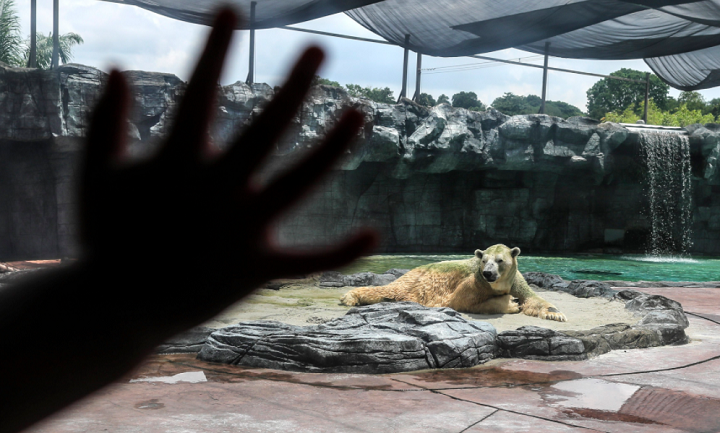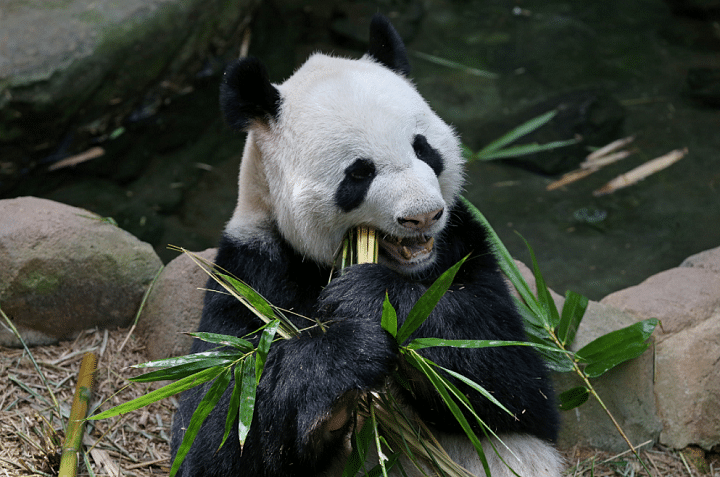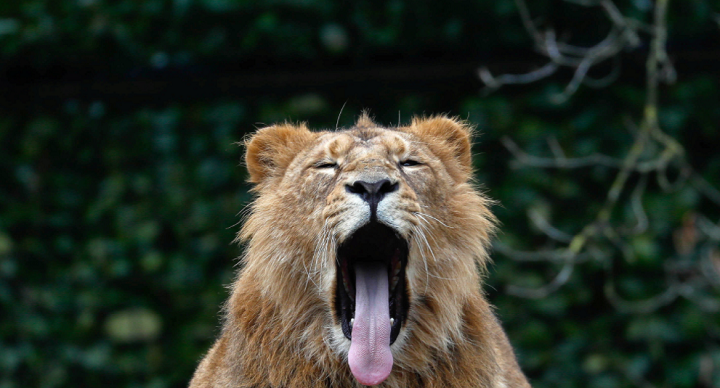ST Scroll Back: We love Inuka, pandas, but do they take attention away from ugly, vital creatures?
When it comes to conservation efforts, charismatic animals like polar bears and tigers hog all the attention.
Sign up now: Get ST's newsletters delivered to your inbox

Inuka spent his entire life in Singapore. PHOTO: EPA-EFE
PHOTO: EPA-EFE
Follow topic:
Singapore's polar bear, Inuka, was adorable as a furry baby.
As he faced declining health and the possibility of being put down, he drew the crowds like the charismatic animal that he was.
His huggable form was shared by roly-poly pandas, which get their, well, lion's share of attention.
Globally, pandas are the face of World Wildlife Fund (WWF).
The panda had been the international conservation organisation's logo since its founding in 1961.
It got the gig because WWF's founders "agreed that the big, furry animal with appealing, black-patched eyes would make an excellent choice".
In Singapore, pandas Kai Kai and Jia Jia got loads of attention whether they're getting help becoming papa and mama bears, or just sitting there chewing bamboo until the cows come home.

As a huggable-looking animal, Kai Kai didn’t have to do much to get love and attention from the public.
ST PHOTO: WANG HUI FEN
Could less cute or even ugly creatures one day rival Singapore Zoo icons Inuka and Ah Meng (the original grande dame orang utan or her granddaughter), or magnificent lions and tigers for our love?
This could be an important question to ask as ugly animals or creepy-crawlies are vital to ecosystems too.
While it seems unlikely anyone would keep vigil for, let's say, a dying species of bugs like they would have had for dear Inuka, some odd creatures have managed to garner fans.
Read on to see if they pass the huggability test.
LOVE BUGS
Mr Andrew Jonathan Balmer wrote in the Scientific American magazine urging more love and attention to bugs and other invertebrates.
"Many in the conservation community have taken off their panda cap long enough to realise that while focusing our attention on popular mammals may attract public support and funds for these particular animals; it results in a significant lack of interest in less 'glamorous', yet often more endangered species." - Mr Balmer, in a piece called "Why we don't need pandas" in Scientific American magazine.
Invertebrates:
79 - 97%
Invertebrate numbers as a percentage of all species on earth. This is by far the largest group in the animal kingdom, said National Geographic. So far, 1.25 million species have been described, most of which are insects, and there are millions more to be discovered - all probably not huggable.
Invertebrate numbers as a percentage of all species on earth. This is by far the largest group in the animal kingdom, said National Geographic. So far, 1.25 million species have been described, most of which are insects, and there are millions more to be discovered - all probably not huggable.
11%
Invertebrates' share of all conservation literature. People prefer to focus conservation efforts on magnificent lions and awesome eagles rather than invertebrates like microscopic mites or pesky ants - also not huggable.
Invertebrates' share of all conservation literature. People prefer to focus conservation efforts on magnificent lions and awesome eagles rather than invertebrates like microscopic mites or pesky ants - also not huggable.
Mammals:
3%
Mammal numbers as a percentage of all species on earth.
Mammal numbers as a percentage of all species on earth.
68%
Mammals' share of all conservation literature. Lions are part of this group with the lion's share of conservation efforts.
Mammals' share of all conservation literature. Lions are part of this group with the lion's share of conservation efforts.

An Asian lion being effortlessly appealing in a Belgium zoo. Mammals get 68 per cent of all conservation literature.
PHOTO: REUTERS
LOVE RATS
Top five animals drawing online donations for WWF (US) between 2007 and 2011:
Polar bear
Panda
Tiger
Snow leopard
Meerkat
Top five animals drawing online donations for the Zoological Society of London's Edge of Existence programme in 2008:
Baiji (now extinct)
Long-eared jerboa
Red slender loris
Hog-nosed bat
Aye-aye
Somehow, the Zoological Society of London was able to get people to tear their gaze away from sensational snow leopards long enough to give money to vampiric-looking bats.

